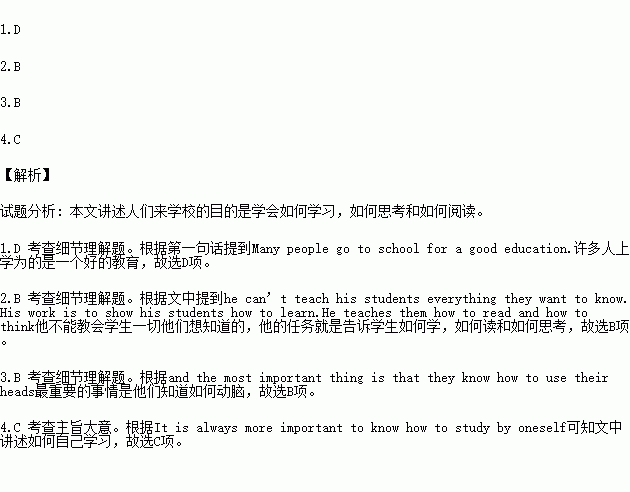题目内容
Many people go to school for a good education. They learn languages, history, maths and other lessons. School education is very important and useful. Yet no one can learn everything from school. No matter how much a teacher knows, he cannot teach his students everything they want to know. His work is to show his students how to learn. He teaches them how to read and how to think. So, much more is to be learned outside school by the students themselves. It is always more important to know how to study by oneself. It is quite easy to learn something in a language or a formula(公式) in maths,but it is difficult to use a formula in finding the answer to a maths problem . Great inventors do not get everything from school but they can invent many things and change the world a lot. Though Thomas Edison invented many things he didn’t have much school education. How do they do all these? Because they know how to study. A lot of things are not taught in the classroom. They get knowledge from books outside school. They work hard all their lives, and the most important thing is that they know how to use their head.
1.What do many people go to school for?
A. To make friends B. To get everything
C. To study by themselves D. To get a good education
2.What should a student learn to do from school?
A. Try to remember more knowledge and formulas.
B. Try to learn how to read and how to think.
C. Try to remember what the teachers teach.
D. Try to invent the world.
3.How can an inventor invent things? The most important thing is how to:
A. be a great inventor
B. study by himself
C. use his head well
D. remember what he’s been taught
4.What is the main idea of this passage?
A. School education is important for a person.
B. A student should learn how to remember a formula.
C. A student can not learn everything from school.
D. Inventors can invent things and change the world a lot.
 阅读快车系列答案
阅读快车系列答案
